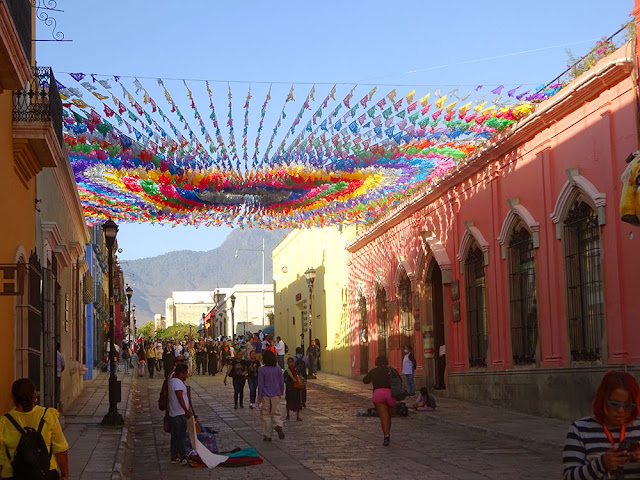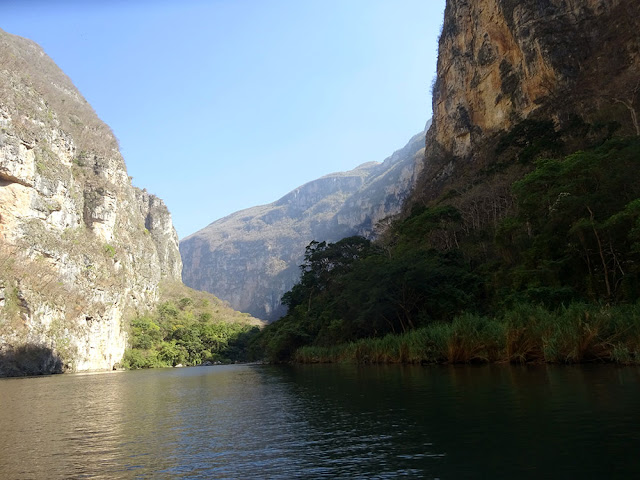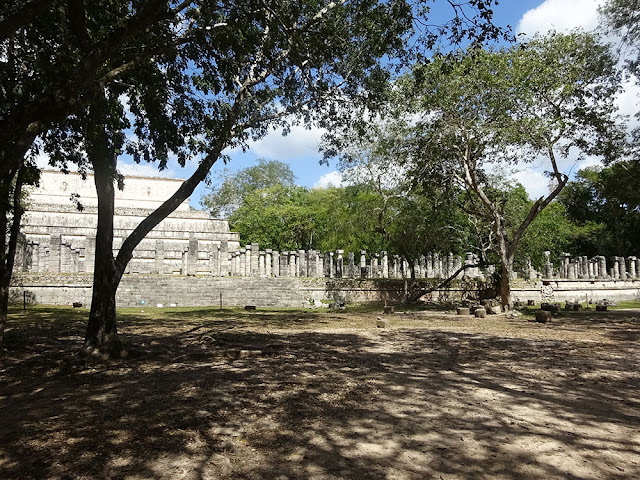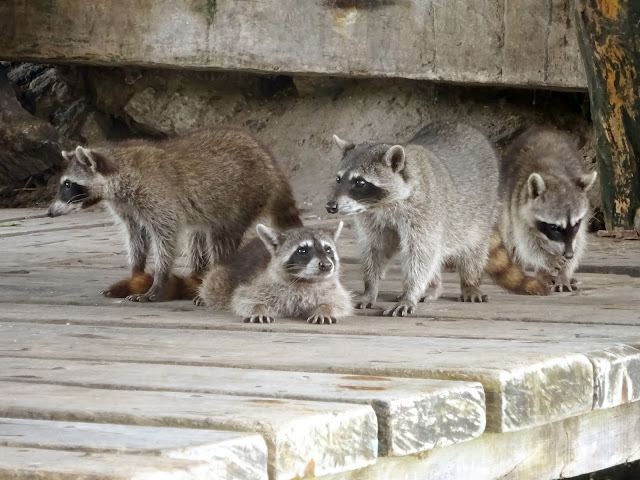Mexico City
The cathedral (1573-1667), seen from the 'zócalo, the main square
The National Palace was built by Hernán Cortés between 1522-1526. Today it is the presidential headquarters.
Until the 60's of the 20th century, Xochimilco was an important food supplier for the Mexican capital. Nowadays it's merely a touristic attraction.
At the Monument of the Revolution (1933), a unique mix of Art Deco and Socialist Realism
Mexican, the tombs of the fallen heroes of the Mexican revolution can be found.
The Angel of Liberty, a sculpture which was placed after an earthquake in 1957
The new Basilica of Guadalupe (built between 1974 and 76) and the old one (1695-1709)
The so-called 'Casa de los Azulejos' (House of Tiles) was built in 1737. In 1903 it was expanded.
The construction of the Postal Palace, between 1902 and 1907, was necessary due to the importance and
volume of correspondence that the Mexican postal service was already handling at that time.
'El rey' (the king) is one of the main pieces in the 'Museo Nacional de Antropología' (National Museum of Antropology)
Another precolombian sculpture in the museum
Ruins of the 'Templo Mayor' (1325). It was the political and religious center of Mexican society
before the arrival of the Spanish conquerors.
The archaeological site of Teotihuacán
It is not known who founded Teotihuacán ('Place where men become gods');
only that the beginnings of the city are dating back to the 2nd century BC.
The Pyramid of the Sun (approx. 1-150 AD)
Despite the height difference, the Pyramid of the Moon is aligned with the Pyramid of the Sun
Patio of the Palace of Quetzalpapalotl
Mural painting of jaguar and feathered serpent
The archaeological site of Monte Albán
Monte Albán was the ancient capital of the Zapotecs and one of the first and most important
cities of Mesoamerica.
It is known that the precolombians called the city 'Ocelotépec', which means 'Mount Jaguar', although
apparently the Zapotecs also knew it by the name of 'Dani Baán'.
It was founded in approx. 500 BC
Ball game court, something common among the different Mexican indigenous tribes. It was played
to decide who would have 'the honor' of being sacrificed to the gods.
Reliefs, mistakenly called 'Danzantes' (Dancers), which are believed to be in fact interpretations of
human anatomy
Oaxaca de Juárez
The construction of the Metropolitan Cathedral began in 1535. It was consecrated in 1733.
The Church of Santo Domingo de Guzmán (16th century) is an example of New Spanish baroque architecture.
Interior of the church
San Pablo Villa de Mitla
The St. Paul's Church (16th century) was built on part of the ruins of a Zapotec religious complex which can be visited in the village.
The church is located on a pre-Hispanic platform that now functions as an atrium. Access to the church is through a portal decorated with pyramid-shaped crests and a niche.
The endemic Mexican fencepost cactus in the church garden
Sumidero canyon
Sumidero Canyon began around the same time as the Grand Canyon in the U.S., by a crack in the area's crust and subsequent erosion by the Grijalva River, which still runs through it. Sumidero Canyon has vertical walls which reach as high as 1,000 metres.
You can find there river crocodiles,...
...spider monkeys,...
...black vultures...
...and lots of cormorants.
Zinacantán and San Juan Chamula
The church of San Lorenzo in Zinacantán (16th century) is an example of the so-called ‘iglesias de pueblos de indios’ (churches of Indian towns): a rectangular floor plan, an austere façade with belfry and covered with wood and tile.
This church is a interesting preliminary before visiting the next onein San Juan Chamula, where it is prohibited to take photos inside
In this church, dedicated to Saint John the Baptist, the only truly Christian rite is the practice of baptism.
In the main arch you can't find any Christian iconography at all: just colorful blades, stars and circles. Inside the people practice rites which remind of pre-Columbian traditions. Sitting between pine branches on the ground, in front of display cases with mirrors, images of saints, flowers and lit candles, many of them have brought a chicken to be sacrificed. A sacred corn distillate, called 'posh', is offered, even among to the younger ones.
The deceased are buried at a very shallow depth. The graves are crowned by crosses of different shapes and colors.
San Cristóbal de las Casas
The construction of the cathedral of San Cristóbal de las Casas began in 1528. It is a clearly colonial building in a baroque style.
The church of Santo Domingo, built in the 17th century, surprises because of its façade, overloaded with figures
ornamentals such as anagrams and mermaids.
Agua Azul and Misol-Ha waterfalls
The Agua Azul waterfalls, in the state of Chiapas, son a consequence of the tributaries of three rivers: Otulún, Shumuljá and Tulijá.
They have their beautiful blue color due to the carbonate salts they dissolve.
On a 64 km distance is the Misol-Ha waterfall. The name means 'sweeping water'. It has a height of approx. 30 meters.
The archaeological site of Palenque
Palenque or 'Lakam Há' is one of the most important archaelogical and cultural Maya sites.
The complex is believed to have been built around 100 BC.
The Temple of the Sun
The Temple of the Inscriptions
Detail of some reliefs of the temple
Ball game court
Campeche
Campeche was founded in 1540. It is one of the few walled cities in America, thanks to several attacks by
pirates during its history. One of those pirates was the infamous Francis Drake.
The Cathedral of Campeche (1650-1760), was built in a New Spain baroque and neoclassical style.
Mérida
The main square of Mérida, with the Municipal Palace
The cathedral of San Ildefonso (1562-68) knows several architectural styles: Renaissance
Franciscan, Mannerism and Mudejar.
Interior of the Palacio del Gobierno (Government Palace), built in 1892
Hall in the Palace with murals by the Yucatecan painter Fernando Castro Pacheco
Izamal
What above all stands out in Izamal is that all the houses in this officially declared 'pueblo mágico' (magical village) have been painted yellow.
Even the façade of the Franciscan convent (16th century).
Interior of the church of the convent
The archaeological site of Chichen Itzá
Chichén Itzá are ruins of a Mayan city or ceremonial center that since its founding in 800
AD went through various construction periods and influences from the different tribes that occupied it.
The Temple of Kukulcán or 'El Castillo' (the Castle) is from the 12th century AD. Kukulcán was the name of the feathered serpent god of many Mesoamerican cultures.
The Temple of the Warriors was influenced by the architecture of the Toltecs.
Altar, called 'Tzompantli', where a set of skulls were mounted in order to honor the
gods. It derives from the practice of human sacrifice among ancient Mesoamericans.
Detail of one of the reliefs found in the ball court in Chichen Itzá
Río Lagartos
Actuallly it isn't a river (río in Spanish) but an estuary (ría), with both salt water from the sea and fresh water from the river.
In 1511, an expedition found large amount of crocodiles here and named it 'Río de los Lagartos' (Lizard River).
Species of cocrodiles to be find there are the saltwater crocodile and the Morelet crocodile (see above).
Between the birds you can see the great white pelican,...
...the brown pelican,...
...cormorants,...
...flamingos...
...and the black eagle.
Landscape in Río Lagartos
Raccoons
© Tjade Witmaar 2024










































































No hay comentarios:
Publicar un comentario